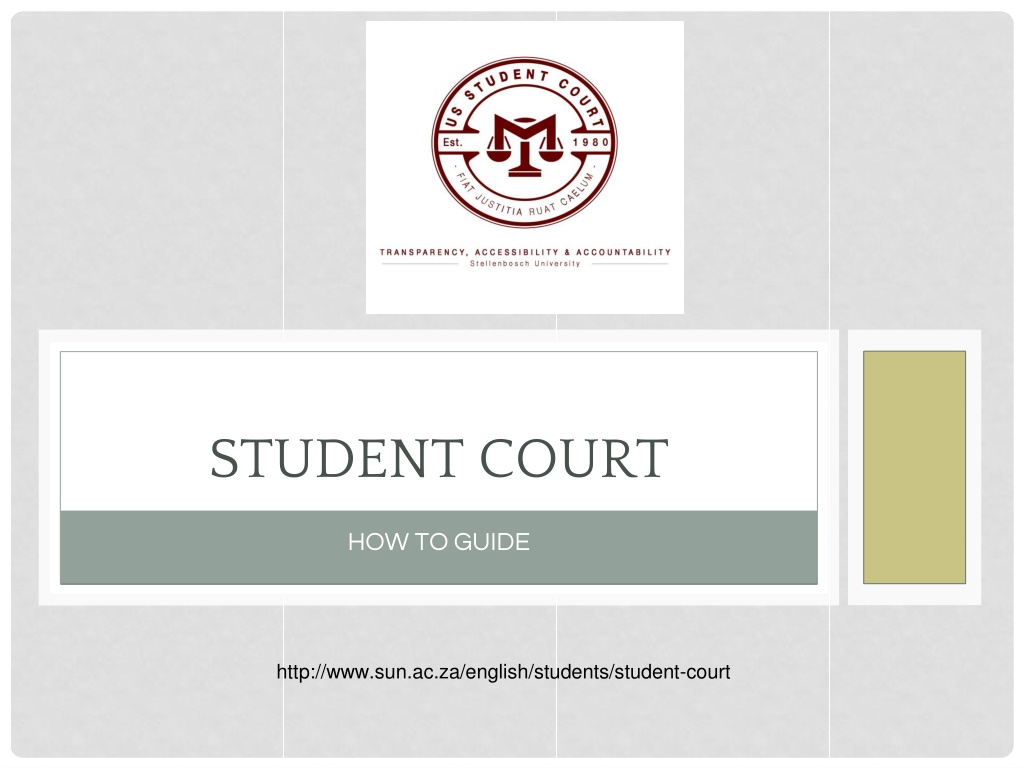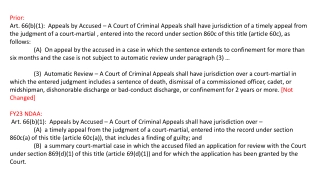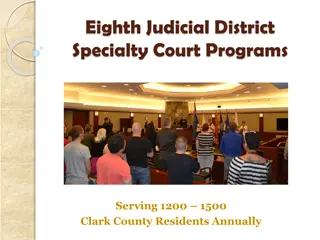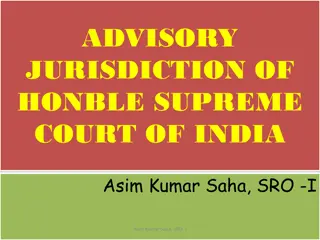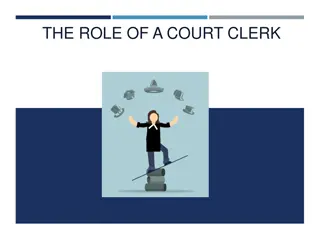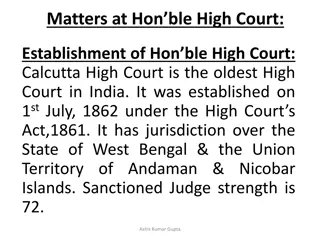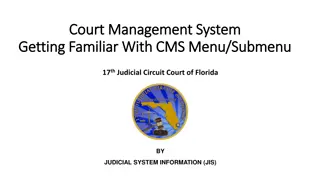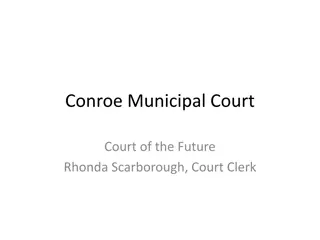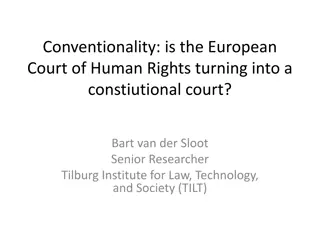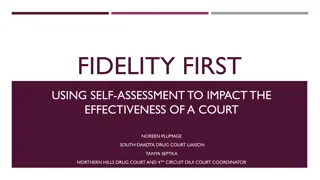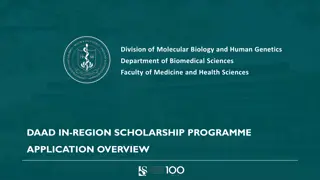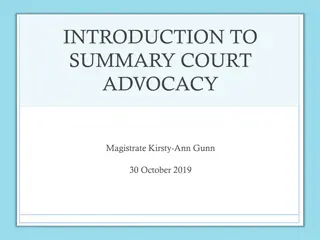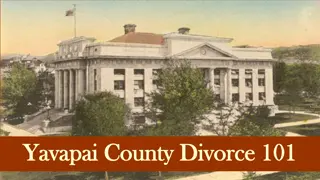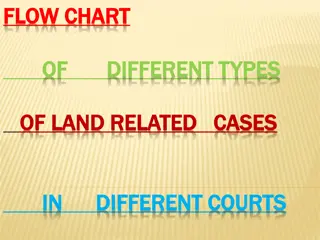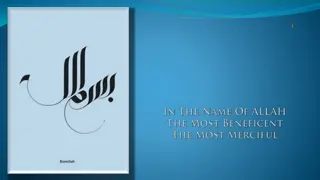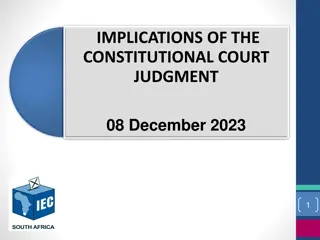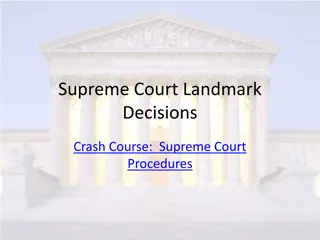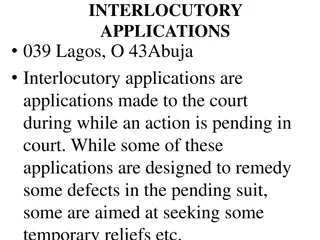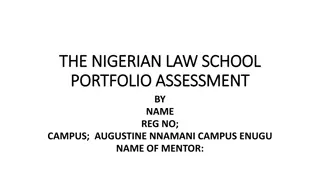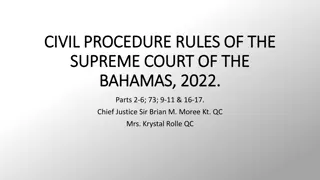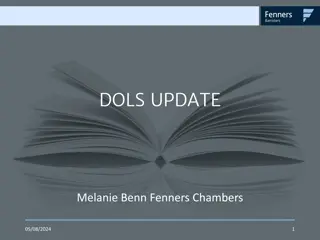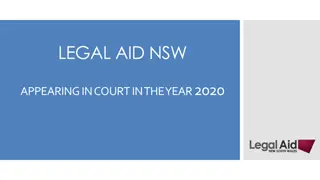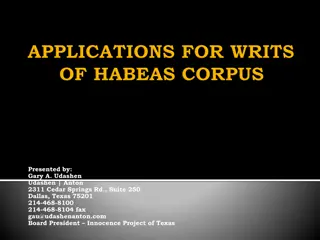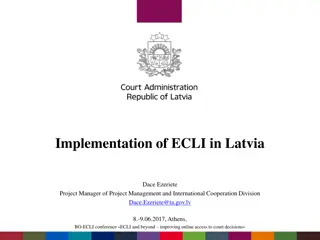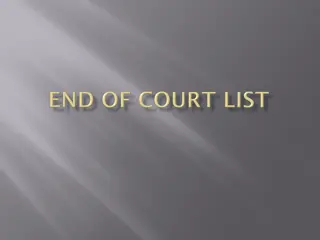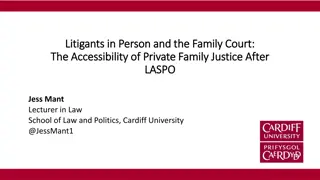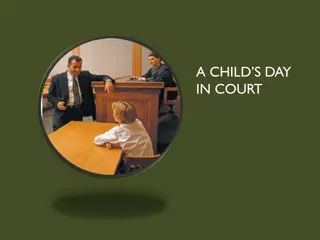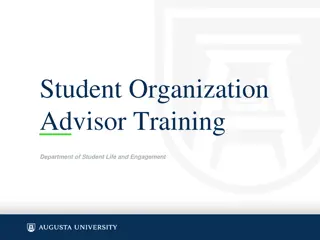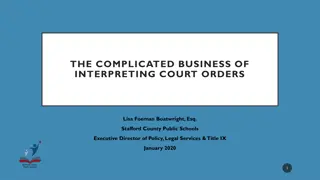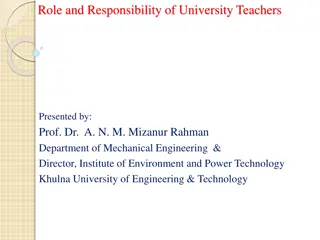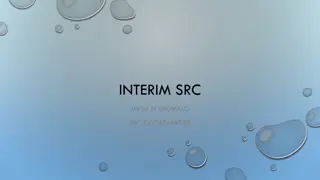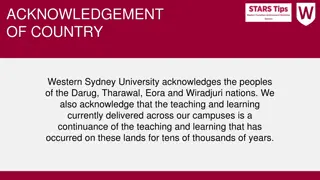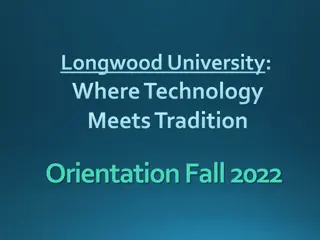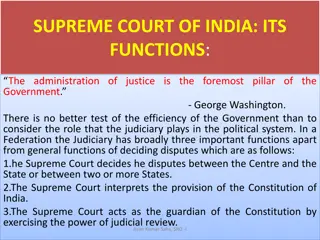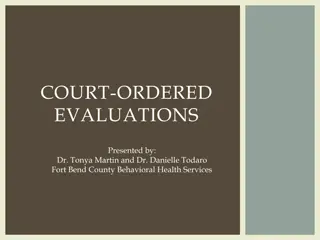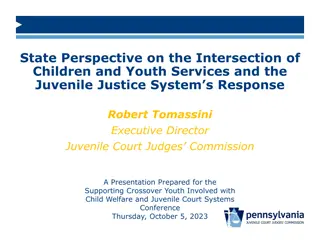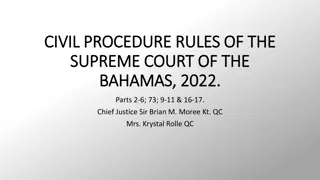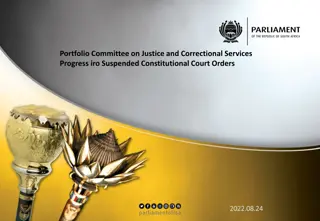Student Court Guide at Stellenbosch University
The Student Court at Stellenbosch University serves as an administrative, independent tribunal for students, ensuring impartial adjudication. It handles cases brought by students or student bodies, upholding principles of independence, impartiality, and dignity. The court may make judgments on constitutional interpretations, actions of student bodies, and more. To bring a matter to the Student Court, one must follow specified procedures like drafting a notice of motion and supporting affidavits.
Download Presentation

Please find below an Image/Link to download the presentation.
The content on the website is provided AS IS for your information and personal use only. It may not be sold, licensed, or shared on other websites without obtaining consent from the author. Download presentation by click this link. If you encounter any issues during the download, it is possible that the publisher has removed the file from their server.
E N D
Presentation Transcript
STUDENT COURT HOW TO GUIDE http://www.sun.ac.za/english/students/student-court
FUNCTION OF STUDENT COURT An administrative, independent tribunal that adjudicates over matters impartially All student bodies are subject to the judgments of Student Court All student bodies must cooperate to ensure the independence, impartiality, dignity and accessibility of the Student Court
WHO CAN BRING MATTERS TO STUDENT COURT Any student or student body can bring cases before the Student Court, as well as: - Any person the Student Constitution allows to bring the case - Persons or bodies who are given consent by participating parties before the Court to participate in the case Persons may participate in Student Court with or without a representative; representatives may only be students The procedure according to which cases are brought before the Court is set out in the Student Court Rules of Procedure (available on Student Court s website)
STUDENT COURT MAY MAKE JUDGMENTS IN THE FOLLOWING CASES: Give an interpretation, or to confirm the interpretation of a party before the Court, regarding the Student Court Constitution; or a student body provision Decide on the constitutionality of any action or omission of a student body Review any decision of a student body or a member where the rights of a student or group of students are materially and adversely affected (eg. amendment of constitutions, appointments and rejections) Make a final decision regarding any matter where the parties consent to the authority of the Student Court
HOW TO BRING MATTER TO STUDENT COURT 1. 1. Draft a notice of motion Draft a notice of motion A notice of motion informs the court and the other party that a legal remedy is being sought 2. 2. Draft one or more supporting affidavits Draft one or more supporting affidavits Affidavits record certain facts under oath A founding affidavit sets out the facts surrounding the dispute, a short argument as to why you are entitled to the relief sought, and the remedy you want the court to give. A supporting affidavit is written by another person involved in the case that can support your argument. 3. 3. E E- -mail these documents to mail these documents to studentcourt@sun.ac.za The defendant shall be notified about the case by Student Court and be expected to file a notice of intention to oppose as well as their answering affidavits. studentcourt@sun.ac.za
HOW TO BRING MATTER TO STUDENT COURT 4. 4. Student Court will take note of your application Student Court will take note of your application A date and time for the announcement of its decision will be set. All parties will be kept informed and will have access to all the documents pertaining to the case. If the court deems it necessary, it will set down a date and time for a hearing. Visit the following link for document templates: http://www.sun.ac.za/english/students/student http://www.sun.ac.za/english/students/student- -court/important court/important- -documents documents
HOW TO DRAFT A CONSTITUTION GUIDELINES
GENERAL No bullet points Sections will however be numbered and sub-sections will have letters (eg. 1(a), (b) etc.) Correct spelling and grammar Make use of professional and precise language Make use of relevant/essential information Applicable procedural steps must be elaborated on If you refer to another document, attach that document separately as an addendum (unless you refer to the Student Constitution, Societies Constitution, or Studente Reglement we already have those, we promise)
GENERAL Beware of contradictions and confusing provisions If there is an interpretation issue, the court might not approve it Ensure your constitution makes reference to the Student Constitution and/or the Society's Constitution where relevant, e.g. Election procedures Discipline Your constitution should be unique Ensure the constitution drafted and tailored to your particular needs.
CONTENT Preamble The aims, purpose and objectives This is what you are all about, all your hopes and dreams essentially. Your values and purposes. This segment is essential as your entire constitution and future amendments will have to align with the view expressed in this segment. Definitions Define ambiguous words and terms specific to your constitution Common definitions necessary: Day (includes/excludes weekends and public holidays?), week, report, Quorum (according to specific circumstances) e.g. meetings, AGM S, elections, disciplinary procedures Members (who qualify as members?)
CONTENT Membership Remember, membership may not be denied to any registered student who professes a sincere intention to be part of the society 85% of ALL members in the society must be registered students of Stellenbosch University General considerations: Who may become a member? (may not be discriminatory); Is there a membership fee?; How is membership terminated?; Do members have rights and/or responsibilities?; Are there levels of membership? (e.g. ordinary, associate, honorary)
CONTENT The executive committee and management The executive committee and management Essential portfolios of the executive committee must be included Further elaboration on the essential duties and powers (in broad terms) Note that Exec meetings should preferably be accessible/ open to members What happens if there is a vacancy? Executive must consist of at least 85% registered students Election processes (very important!) Election processes (very important!) Specific and detailed elaboration on your chosen election procedure must be included. - Further elaboration on quorum quorum of members (not too high, keep it under 75% of registered members); number of votes needed; when they take place; how does it take place; notification of elections etc. - By-elections in case of a vacancy?
CONTENT Discipline Discipline Note: Your procedures subordinate to disciplinary procedure in the Student Constitution, Societies Constitution, and Studente Reglement Include: - What type of conduct is regarded as unacceptable - Circumstances under which a member can be suspended or expelled - Rights of members in terms of suspension and expulsion Discipline procedures Discipline procedures may be made subordinate either to the Central Disciplinary Committee (CDC) or the Court. If it is made subject to the CDC, then any appeals (later) must be made to their appeal process, but if it is made subject to Student Court, then there must be a right of appeal to Student Court. The Guidelines elaborate on this. The society has a choice.
CONTENT Discipline (continued) Discipline (continued) Procedural issues Disciplinary measures must be fair Who makes the decision to expel a member? Allow parties an opportunity to state their case; Ensure that members receive warnings for transgressions; Give fair warning and proper written notice within a reasonable time for the member to state their case before suspension/expulsion/termination Inform the member of their right to appeal the matter (if applicable) to the Student Court
CONTENT Discipline of office bearers Under what circumstances can a member of the executive be removed from office? How would a vote of no confidence work? Procedure to be followed? What is the notice period? Who chairs that meeting? How many votes needed? What would the quorum be? Appeals Must make provision for appeal to Student Court is discipline is made subject to the Court (if it is made subject to the CDC, then that process must be made provision for)
CONTENT Meetings Meetings State when these will take place; How notification will work; Prior knowledge of agenda; Are there specific procedures for: Executive Committee meetings; The Annual general Meeting; Special meetings etc. Amendments Amendments Ensure that you determine what constitute as quorum amendment proposals to be considered; and Ensure that you elaborate on the applicable procedures elaborate on the applicable procedures quorumfor constitutional Any constitutional amendment made not complying with the procedural Any constitutional amendment made not complying with the procedural requirements of Student Court are not valid requirements of Student Court are not valid
PRINCIPLES OF AMENDMENTS Required provisions: Required provisions: A 2/3 majority of the Executive must agree to a constitutional amendment; The amendment must be voted in by at least a 2/3 majority of the members present; All members of the society must be notified at least 2 weeks in advance regarding the time and place of a meeting where the amendment will be voted on; The notice must give reasons for the proposed amendment. It is best to do an amendment at your AGM
PRINCIPLES OF AMENDMENTS Suggested fundamental provisions: Irrespective of the applicable sections in terms of which this Constitution is revised and/or amended; the methodology and practice must ensure it conforms to the principles of Ethical Good Governance and Constitutional democracy; with specific focus on:- 1.1. Transparency; and 1.2. Accountability; and 1.3. Consultative governance; and 1.4. Openness; and 1.5. Participative democratic process.
PRINCIPLES OF AMENDMENTS If a constitutional amendment has taken place, the [Chairperson] must submit the text of the constitutional amendment to the Student Court for certification. No text comes into effect until the Student Court has certified that - 1) the text has been passed in accordance with applicable amendment provisions; and 2) the whole text complies with the values of Bill of Rights of the Constitution of the Republic of South Africa; and 3) specifically complies with section ... of your Constitution.
Ive finished my drafting What now? Step 1 Step 1 Send your constitution to studentcourt@sun.ac.zain a Word document, telling us you want it reviewed. Remember, if you referred to another document then you have to send that separately, also in Word format (unless it is to the Student Constitution, Societies Constitution, and/or Studente Reglement ) If you are making amendments one Word document, and your original, unamended constitution in another. amendments, then you need to send your amendments in
Ive finished my drafting What now? Step 2 Step 2 The Student Court will use the Track changes tool on Word to review your document and make suggestions. Thereafter, we will send it back to you to make the necessary changes. Step 3 Step 3 Make the changes necessary and resubmit your changed document to Student Court. Note that steps 2 and 3 may be repeated as needed
Ive finished my drafting What now? Step 4 Step 4 If the Student Court is happy with your changes and ready to approve it, we will do so and send you back an approval certificate. Step 5 Step 5 Have fun! Remember Remember, the better you draft it the first time and the faster you make the changes when it is sent back to you, the faster we can get your constitution approved... Good luck!! Good luck!!
FOR MORE INFO CONTACT: Student Court: Student Court: studentcourt@sun.ac.za studentcourt@sun.ac.za
